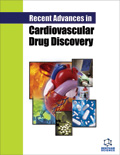Abstract
The large research series has become known to the international scientific community 1986 after a publication in The Lancet (2:595). In short, cultures of smooth muscle cells from the human aortic intima or blood-derived monocytes/macrophages were used for measurements of ability of drugs and plant substances to induce or prevent cholesterol deposition in the cells, cultured with the sera from atherosclerosis patients, which was interpreted as pro- or anti-atherogenic effects. However, as discussed previously, the relationship between the uptake of lipids by cultured cells and atherogenesis in vivo must be inverse rather than direct. The up-regulation of lipoprotein receptors is one of the action mechanisms of some cholesterol-lowering drugs. Accordingly, if a drug lowers the uptake of lipids by cultured smooth muscle cells or macrophages, it should be expected to elevate the blood cholesterol level in vivo. Nevertheless, following their concept of blood atherogenicity, the same researchers started to apply apheresis (extracorporeal perfusion of patients’ blood for 2 hours through a column with immobilized LDL) aimed at a removal of non-lipid atherogenicity factors. In conclusion, validity of the cell culture method of serum atherogenicity measurement, and testing of pro- or antiatherogenic effects of drugs and dietary supplements is questionable. It would be useful to reproduce some of the cell culture experiments discussed in this letter in an independent laboratory. Verification is necessary prior to preclinical studies in animals and then humans of reportedly anti-atherogenic substances, detected by the cell culture method.
Keywords: Atherosclerosis, apheresis, evidence-based medicine, placebo.
 14
14


